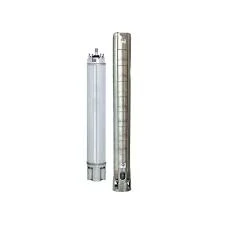Aug . 30, 2024 12:13 Back to list
How to Set Up a Submersible Pump
How to Set Up a Submersible Pump A Step-by-Step Guide
Setting up a submersible pump may seem daunting at first, but with the right knowledge and tools, it can be a straightforward process. Submersible pumps are designed to be submerged in water, making them ideal for applications such as draining basements, emptying pools, or supplying water from wells. Here’s a step-by-step guide to help you set up your submersible pump effectively.
Step 1 Gather Your Materials
Before you begin, ensure you have all the necessary materials. You’ll need the submersible pump itself, a discharge pipe or hose, a check valve, a power source (electrical outlet or generator), and tools such as pliers, wrenches, and pipe fittings. Always wear protective gear, including gloves and safety goggles, during the installation process.
Step 2 Choose the Right Location
Selecting the appropriate location for your pump is crucial. If you’re using it for drainage, ensure the pump is placed in the lowest area of the space you want to empty. For well applications, make sure the pump is submerged deep enough to avoid drawing in air. Additionally, ensure the area is free of debris and obstacles to allow for smooth operation.
Step 3 Prepare the Pump
Before submerging the pump, check that it is in good condition. Inspect the power cord for any signs of wear or damage. Ensure that the pump’s inlet screen is clean to prevent clogging. If applicable, connect the discharge pipe or hose to the discharge port on the pump. Use appropriate fittings to ensure a tight seal.
Step 4 Install the Check Valve
how to set up submersible pump

To prevent backflow when the pump is turned off, install a check valve on the discharge line. This valve allows water to flow out while preventing it from flowing back into the pump. Place the check valve as close to the pump as possible for maximum effectiveness.
Step 5 Submerge the Pump
Carefully lower the submersible pump into the water. If it’s a deep well pump, secure it properly to prevent it from sinking too deep. For drainage purposes, make sure the pump sits firmly at the bottom of the basin or pit.
Step 6 Connect to Power
Plug the pump into a grounded electrical outlet. If your pump requires a generator, ensure it is properly positioned and connected. Avoid using extension cords unless they are rated for outdoor and wet situations. Always follow the manufacturer’s guidelines regarding electrical connections.
Step 7 Test the Pump
Once everything is set up, turn on the power to the pump. Monitor its operation to ensure it is functioning correctly. Check for any leaks in the discharge line and listen for any unusual noises from the motor. It’s normal for the pump to vibrate slightly, but excessive shaking could indicate a problem.
Conclusion
Setting up a submersible pump doesn’t have to be overwhelming. By following these steps and ensuring safety throughout the process, you can successfully install your submersible pump and have it operating efficiently in no time. Always refer to the manufacturer’s manual for specific instructions and safety information tailored to your pump model. With proper care and maintenance, your submersible pump can serve you well for years to come.
-
Submersible Water Pump: The Efficient 'Power Pioneer' of the Underwater World
NewsJul.01,2025
-
Submersible Pond Pump: The Hidden Guardian of Water Landscape Ecology
NewsJul.01,2025
-
Stainless Well Pump: A Reliable and Durable Pumping Main Force
NewsJul.01,2025
-
Stainless Steel Submersible Pump: An Efficient and Versatile Tool for Underwater Operations
NewsJul.01,2025
-
Deep Well Submersible Pump: An Efficient 'Sucker' of Groundwater Sources
NewsJul.01,2025
-
Deep Water Well Pump: An Efficient 'Sucker' of Groundwater Sources
NewsJul.01,2025
-
 Submersible Water Pump: The Efficient 'Power Pioneer' of the Underwater WorldIn the field of hydraulic equipment, the Submersible Water Pump has become the core equipment for underwater operations and water resource transportation due to its unique design and excellent performance.Detail
Submersible Water Pump: The Efficient 'Power Pioneer' of the Underwater WorldIn the field of hydraulic equipment, the Submersible Water Pump has become the core equipment for underwater operations and water resource transportation due to its unique design and excellent performance.Detail -
 Submersible Pond Pump: The Hidden Guardian of Water Landscape EcologyIn courtyard landscapes, ecological ponds, and even small-scale water conservancy projects, there is a silent yet indispensable equipment - the Submersible Pond Pump.Detail
Submersible Pond Pump: The Hidden Guardian of Water Landscape EcologyIn courtyard landscapes, ecological ponds, and even small-scale water conservancy projects, there is a silent yet indispensable equipment - the Submersible Pond Pump.Detail -
 Stainless Well Pump: A Reliable and Durable Pumping Main ForceIn the field of water resource transportation, Stainless Well Pump has become the core equipment for various pumping scenarios with its excellent performance and reliable quality.Detail
Stainless Well Pump: A Reliable and Durable Pumping Main ForceIn the field of water resource transportation, Stainless Well Pump has become the core equipment for various pumping scenarios with its excellent performance and reliable quality.Detail
